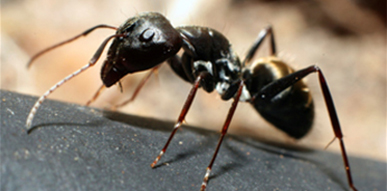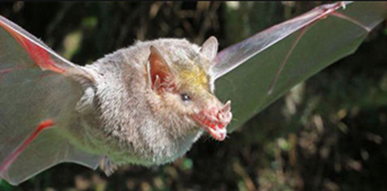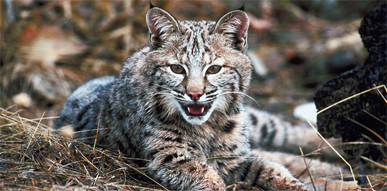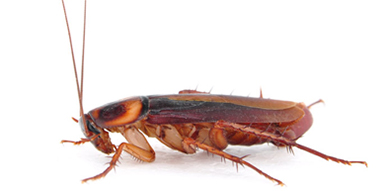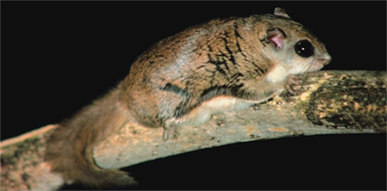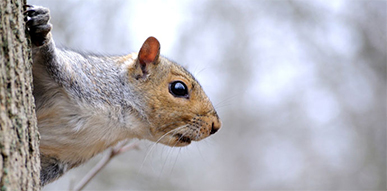Two species of foxes—the Red and Gray Fox—live in Georgia. The Gray Fox is a grayish-blackish mix with patches of red placed on the body and a black stripe running down its back to the tail. Stretching about 24” to 30” and 8 to 12 pounds, he is the smaller of the two foxes. Foxes tend to be very active during their mating season, which runs from January through April. In some cases, Gray Foxes become a nuisance shortly after this period for they are known to seek a den near a home, or feed on food sources provided by people in order to provide for the pups. Generally, the male and female stay nearby to raise the young, so the likelihood of seeing multiple foxes and pups shortly after a breeding period is higher. The Gray Fox has a canny way of survival due to the fact that it can elude its predators by climbing trees.
The Red Fox is a bushy, deep reddish brown with a fluffy white tipped tail. They are around 36” to 45” in length and weigh in around 9 to 16 pounds. They have a much shorter breeding time than the grays do, starting in January and lasting through February. Though the breeding period is shorter for The Red Fox, both species are known to share the same tendencies in raising the young. The Red Fox is very stealth, very fast, and have very high endurance levels to escape their predators.
Because of the adaptability of Gray and Red Foxes from rural to urban and suburban environments, in addition to the abundant food and shelter associated with these areas, both species of foxes are quite common in cities, towns, subdivisions, and even near rural home sites as well as in their natural habitat. Although foxes are primarily nocturnal hunters, it is not uncommon to see a fox during the day. You may want to remove any bird feeders that may be attracting mice, rats, and birds. The attraction of these creatures in your yard can provide a luscious feeding opportunity for foxes. Other prey for foxes includes domestic birds like chickens, guineas, and ducks.
If you experience a situation with a nuisance fox, do not try to rid the problem yourself. All Exterminating Wildlife Division has all the tools and experience needed to safely catch and remove foxes. Fox removal can be very difficult at times and it is very important not to educate the animal before removal or scare them away for a short while just to return and be a problem again. All Exterminating can perform an onsite inspection and assess the den area, travel routes, feeding patterns, and the number of nuisance foxes in your area and create a plan suitable for everyone for a safe removal.


